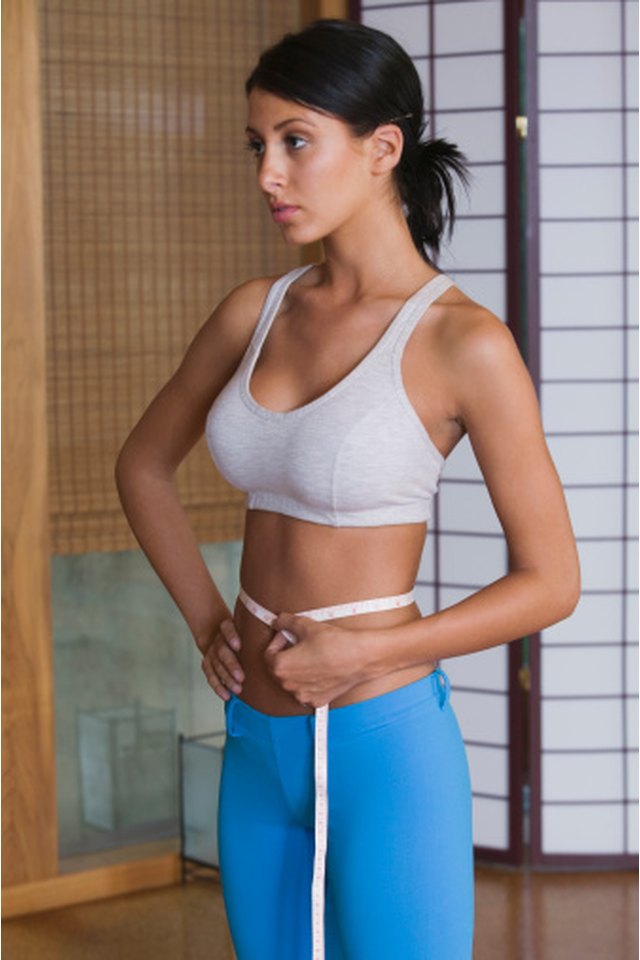How to Measure My Waist, Chest & Hips With No Measuring Tape

A study in The Lancet found in 2005 that waist-to-hip ratio was more predictive of heart attacks than body mass index (BMI). For those who watch their weight, body measurements help track weight loss. Even for people who wish to maintain their weight, knowing waist, chest and hip measurements will assist with finding proper clothing sizes. Measuring tape makes measuring easier, but is not the only means of ascertaining body measurements.
Face a full-length mirror while wearing minimal or no clothing. Accurate measurements require measuring only the body, not additional layers of fabric. Stand straight and face the mirror directly.
Find the natural waistline. For some people, the natural waistline falls where the body is slimmest, at or just above the navel. Others can find their natural waistline by bending slightly to the right or left and noting where the waist creases. After bending to determine where the waistline lies, stand straight again before measuring.
Pass the string around the natural waistline like a belt. Avoid sucking in or protruding the stomach and measure on an exhalation to ensure a more accurate measurement. Keep the string or belt parallel to the floor and pull it firmly, but not tightly around the waist.
Make a mark on the string with the pen where the loop around the waist meets the end of the string. The length of string from the end to that mark represents the natural waist measurement.
Measure the chest around its widest part with another length of string, again keeping the length of string horizontal as it goes around the body. Women may choose to wear a brassiere for chest measurement, particularly if they are measuring for clothing size.
Locate the widest point of the hips and measure around them as with the waist and chest measurements. For those who carry excess abdominal weight that could interfere with an accurate hip measurement, pass the string below the abdomen, keeping it as close to horizontal as possible.
Measure each length of string against the yardstick and write down the appropriate measurement. For measurements longer than 36 inches, measure out a yard and mark the string at that point, then measure the remainder and add it to 36 to arrive at the final figure.
Tips
Divide the waist measurement by the hip measurement to derive waist-to-hip ratio. Look for moles, freckles or scars as markers to ensure that future measurements encircle the same place for more accurate measurements. Measure and track other body parts such as upper arms, thighs, neck and calves to observe weight loss or gain more precisely.
Warnings
Using a stretchy material for measurements will result in inaccurate figures.
References
Resources
Writer Bio
This article was written by the CareerTrend team, copy edited and fact checked through a multi-point auditing system, in efforts to ensure our readers only receive the best information. To submit your questions or ideas, or to simply learn more about CareerTrend, contact us [here](http://careertrend.com/about-us).
